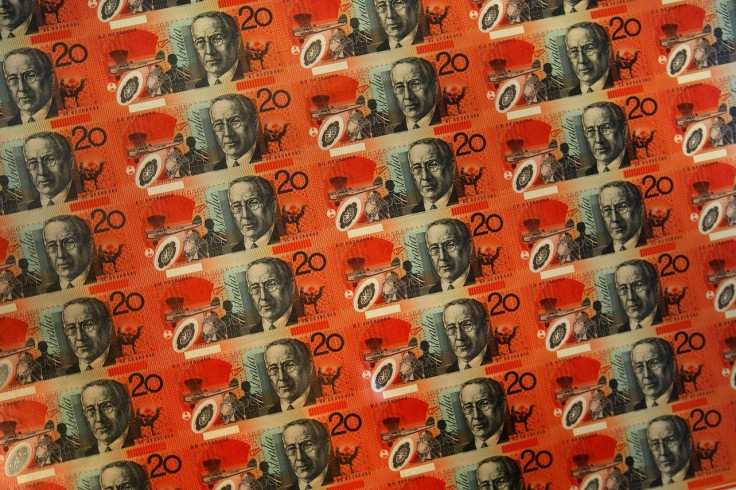Australian dollar surges to one month high after RBA governor hints no rate cut plan in 2015

The Australian dollar bounced back to a one-month high on Nov. 25 Wednesday after RBA governor Glenn Stevens hinted that no rate cut is in the offing and told economists to "chill out" over the holidays.
In a few words, the governor articulated that another rate cut in 2015 is not on cards and the apex bank will take a hard look on rates only by early 2016.
The result was that at 12.12 AEDT on Wednesday, the dollar traded at 72.60 US cents, up from 72.02 cents of Tuesday.
The RBA governor gave the crisp message during a speech on Tuesday night and indicated that the apex bank would wait until the first board meeting in 2016 before contemplating any rate cut, reports The Sydney Morning Herald.
The RBA governor told a gathering of business economists that he concurred with the argument for holding the cash rate target at 2 percent when the board meets on December 1.
“I'm more than content to lower it if that actually helps, but is that the best thing to do at any particular time?” Stevens asked, while replying to a question on the cash rate.
“We've got Christmas. We should just chill out, come back and see what the data says,” he added.
One more reason attributed to the spurt in Australian dollar is the unexpected fall in US dollar that came after a the release of dismal economic growth figures that showed decline in personal consumption, which was more than expected.
In a nutshell, the key movements of Australian dollar as on Nov.25
One Australian dollar can buy
- 72.60 US cents, from 72.02 cents on Tuesday
- 88.87 Japanese yen, from 88.37 yen of Tuesday
- 68.17 euro cents, from 67.74 euro cents of Tuesday
- 110.61 New Zealand cents, from 110.41 NZ cents of Tuesday
- 48.15 British pence, from 47.57 pence of Tuesday
The dollar was trading at a lower rate before reports of the governor's 8pm comment filtered in. The RBA boss’ comment implicitly pointed to a not so rosy picture of the Australian economy. After the comments, the dollar quickly rose through the night of Nov 24 to last trade at US72.45¢, that was an absolute one-month high.
Big surprise
The surprise was that the dollar jumped despite the benchmark price of iron falling 1.9 percent to US$43.89 per tonne (AU$60.23) overnight, which was the lowest since May 2009.
Aussie dollar stood the ground even after Tuesday’s incident of Turkey shooting down a Russian fighter that led to mild turbulence in many financial markets and spurted oil prices.
Despite the governor’s call for a lull, many bankers still expect at least two rate cuts in 2016. The RBA will have some crucial policy events coming up to keep it on toes, during the holiday season, noted Felicity Emmett, co-head of Australian economics at ANZ Bank.
US Fed
Prime among them will be the outcome of the US central bank's meeting on December 17 with high expectations on a moderate rate hike. The other two include Australian labour force report and December quarter consumer price inflation data, due on Jan. 27, the SMH report added.
"Overall, we maintain our view that cash rate will be cut twice next year by 25bps, most likely in February and May," Emmett said.
For feedback/comments, contact the writer at feedback@ibtimes.com.au or let us know what you think below.





















